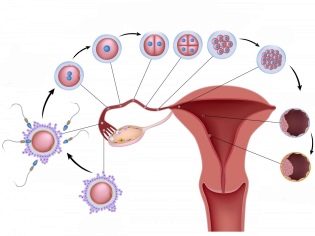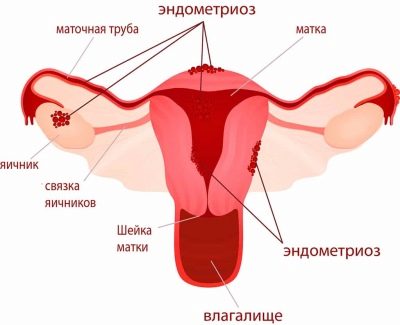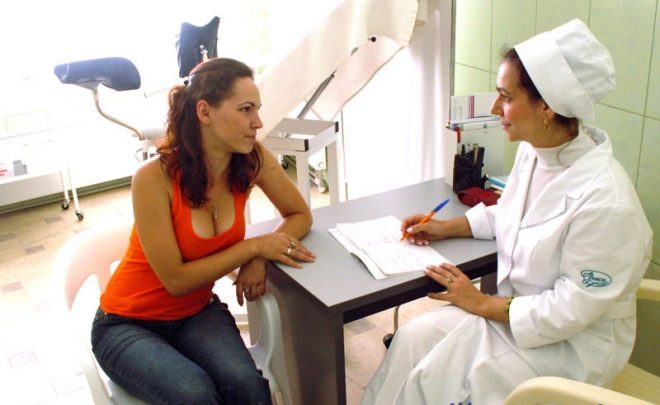Duphaston when planning pregnancy: instructions for use
Among gynecologists, the practice of prescribing Duphaston in pregnancy planning is quite common. The range of its actions is quite wide, but in most cases it is prescribed to women who want to become pregnant.
Is Duphaston a universal remedy for all women who dream of becoming mothers, or is there a number of restrictions for its use? What are the contraindications of this remedy, and does it have side effects? And most importantly, what is the probability that after taking dyufaston, the long-awaited pregnancy will still come? With answers to these questions, instructions for use and features of taking this drug, you can read by reading this material.
Mechanism of action
In order to be fully aware of whether it is worth taking Duphaston when planning pregnancy, it is necessary to clearly understand how this drug affects the female body. This is to understand why it is worth taking. exclusively on certain days of the menstrual cycle. If this rule is not followed, Duphaston, getting into the female body, will perform the opposite function, that is, prevent conception.
The mechanism of action of the drug is as follows. One of the main components of duphaston is artificially synthesized female sex hormone progesterone. It is not without reason that it is called “pregnancy hormone”, since its main function in the female body is a kind of preparation of the uterus for bearing the future fetus: it provides the conditions for the embryo to “firmly” penetrate the uterine mucosa (endometrium). Naturally, this hormone is formed in the postovulatory period of the menstrual cycle, that is, after ovulation has occurred.
Ovulation is a biological process characteristic of the female body. Its essence lies in the fact that the follicle, located in the thickness of the ovary and being a kind of container for the egg cell (female reproductive cell), is broken, as a result of which the egg cell moves towards the fallopian tubes, where the supposed conception should occur (the confluence of the female and male germ cells ).
The role of progesterone in the body of a woman is difficult to overestimate: it has a huge impact on the functionality of the reproductive system, providing a healthy menstrual mechanism, the possibility of conception, as well as the normal course of pregnancy. Progesterone belongs to the group of steroid hormones, and it is synthesized in the ovaries and adrenal glands.
In addition, it is necessary to consider the role of progesterone within the entire menstrual cycle. It involves two phases:
- Follicularor phase of proliferation. Here, all the processes in the reproductive system: the maturation of the follicle, the “proliferation” of the endometrium, etc., occur mainly under the control of estrogens.These changes are a kind of preparation of the woman's body for a possible conception, which can occur during the period of ovulation.
- Lutealor the secretion phase (in the place of a ruptured follicle, a so-called “corpus luteum” is formed, which will further produce progesterone in the amount necessary to ensure conception and possible further normal pregnancy).
Also under the influence of progesterone in the mucous layer of the uterus certain processes occur (increased blood filling of tissues, the layer thickens, becomes more loose, etc.). These cyclical changes are aimed at ensuring the most favorable conditions for implantation of a fertilized egg. If during the ovulation period the conception did not come, then all stages of the menstrual cycle are repeated anew.
The biological value of progesterone on the female body is explained by the effect on the following physiological processes:
- ensuring the normal process of cyclic secretory changes in the endometrium, which are very important for the normal course of pregnancy;
- the suppressive effect on the process of uterus contraction, thereby reducing the risk of rejection of a fertilized egg;
- preparation of the mammary glands for breastfeeding;
- sedative effect on the nervous system of a woman, stabilization of her emotional background;
- stimulation of increasing the size of the uterus with increasing gestational age.
Due to the above properties of progesterone, it is not rarely called the "pregnancy hormone." And this is justified, because without his active participation, neither conception nor the normal course of pregnancy is possible.
Low levels of progesterone in the body of a woman indicate either a “failure” in the luteal phase of the menstrual cycle, or functional failure of the corpus luteum.
Deficiency of this hormone can cause intermenstrual bloody uterine secretions. In addition, an insufficient concentration of progesterone in the blood increases the risk of abortion or the formation of any structural abnormalities in the fetus.
It happens that conception cannot occur due to certain physiological reasons related to the hormonal imbalance in the body of a woman. If progesterone is produced too little, then the possibility of conception decreases, and the risk of termination of pregnancy increases, if it still occurs.
If a woman who wants to become a mother seeks help from a specialist, having a history of spontaneous abortions, or simply has been trying unsuccessfully for a long time to become pregnant, then she may be prescribed certain tests that can confirm an insufficient progesterone level in the body.
In the case when the test results data clearly show progesterone deficiency, the treating gynecologist may prescribe Duphaston as one of the components of drug therapy.
In case of successful therapy - upon pregnancy - Duphaston is not canceled. A woman should continue taking the drug until the 20th week of pregnancy, and then gradually reduce the dose. If you stop taking Duphaston at an early date, you can thus provoke a miscarriage. This drug should be taken only from 16 to 25 days of the menstrual cycle (with a cycle of 28 days) after the onset of ovulation).
It should be borne in mind that the benefits of the use of Duphaston when planning pregnancy will only be the case if infertility is due to progesterone deficiency. If other reasons are an obstacle to the onset of a long-awaited pregnancy, the appointment of Duphaston is not advisable. Therefore, to accept it or not, the specialist decides on the basis of the results of an objective examination.
The attending physician should detail the regimen and set the duration of therapy.Drink the drug on the advice of friends, without first establishing a reliable reason for their problems with conception, it is impossible.
Indications for use
Even after the doctor details in detail the algorithm for taking Duphaston, it will not be superfluous to familiarize yourself with the annotation to the drug. After reading it, you make sure that the tool has a fairly wide range of indications, including:
- Endometriosis. This gynecological pathology associated with the proliferation of endometrial cells - the mucous layer of the uterus, beyond. These cells can grow not only in other parts of the female reproductive system, but also, through the bloodstream, into the distant organs and tissues of the body. Leaving the uterus, these fragments of its mucous layer retain the ability to periodically change, so every month the affected organ increases in size, bleeds and hurts. Also with endometriosis, menstrual disorders and infertility are noted.
- Infertility due to pituitary lutealizing hormone deficiency, which ensures the healthy functioning of the reproductive apparatus of women. Its main goal is to stimulate the production of estrogen by the ovaries - the female sex hormones. The highest concentration of luteinizing hormone in the blood falls on the ovulatory period. As well as a high probability of spontaneous abortion or missed abortion, associated with insufficient progesterone levels.
- PMS (premenstrual syndrome) is a recurrent phase of the menstrual cycle peculiar to a certain percentage of women, which is manifested by a complex of symptoms - such as headache, depressive states, emotional lability, lower abdominal pain, nausea, vomiting, etc. days before the onset of menstruation.
- Dysmenorrhea and frequent delayed menstruation - A pathological condition that periodically occurs during each menstruation. The most characteristic sign of dysmenorrhea is a sharp pain in the lower abdomen. The following disorders may also occur: general malaise, nausea, vomiting, headache, flatulence, labile emotional state, low-grade body temperature, etc.);
- Secondary amenorrhea - absence of menstrual discharge for more than half a year in women who have entered reproductive age, with an established cycle.
- Dysfunctional uterine bleeding - bleeding from the uterus, not associated with normal cyclical changes in the female body. Arise against hormonal "failure".
Of course, Duphaston is most often prescribed when planning pregnancy. If you follow all the recommendations of a specialist and do not break the schedule for taking the drug, the result will become obvious enough in a short time.
Contraindications and possible complications
Unfortunately, there are situations when the attending physician is forced to cancel the use of this tool when planning pregnancy. in case of revealing one of the contraindications, such as:
- hypersensitivity to one of the components of the drug;
- kidney disease;
- cases of rash and pruritus during a previous pregnancy.
If you have at least one of these pathologies in history, then the drug is better not to use.
Otherwise, there may be side effects, due to the appearance of which the application of Duphaston is worth finishing. For example, such as:
- hemolytic anemia (accelerated process of destruction of red blood cells - the state is accompanied by a sharp jump in the indicator of the level of bilirubin in the blood);
- one of the types of allergic reactions;
- headaches;
- liver failure (its symptoms in this case may be a decrease in efficiency, general malaise, abdominal pain, yellowing of the skin and mucous membranes);
- bleeding;
- pain in the area of the mammary glands.
If you do not have the above contraindications to the use of this tool, then you can, trusting the recommendations of the attending gynecologist, feel free to start treatment, observing the dosage regimen and dosage regimen.
It should be noted that the drug is not used for breastfeeding, as its main component is transferred to the baby with mother's milk.
The composition of the drug
Djufaston tablets covered with a white shell. The preparation contains: hypromellose, titanium dioxide, polyethylene glycol 400. Each tablet has 10 mg of active substance. Synthetic analogue of progesterone maximum similar to the natural hormone. In addition, this component is not derived from testosterone, so taking this drug does not provoke a number of side effects that are characteristic of drugs belonging to the group of addrogenic progestogens.
The drug does not adversely affect the functioning of the organs of the gastrointestinal tract, does not violate the metabolism and does not interfere with the normal activity of the liver. Duphaston does not have a contraceptive effect. It does not violate the menstrual function and has no overwhelming effect on ovulation.
In addition to the main active substance, Duphaston tablets contain additional components: lactose monohydrate, magnesium stearate, maize starch, silicon dioxide.
Interaction with other drugs
If the reception of this tool is combined with drugs containing liver enzymes, then its activity decreases significantly.
In most cases, taking Duphaston is appropriate with other drugs that are often prescribed to pregnant women, for example: folic acid, vitamin E, chimes, clostilbegit, etc.
Information that, in combination with other drugs, Duphaston loses its effectiveness, has not yet been discovered.
Dosing rules
Only the attending physician has the right to draw up a treatment plan and calculate the dosage of the drug, since only he is familiar with your history and physiological features.
The data presented in the annotations to the drug are somewhat generalized and serve as an approximate guideline rather than an exact treatment regimen. therefore Do not self-medicate, be guided only by the appointment of a specialist.
In the instructions for use, the dosage is indicated depending on the type of pathology:
- In case of endometriosis, 10 mg of the drug should be taken 3 times a day every day or from day 5-25 of the menstrual cycle.
- In case of luteal deficiency, Duphaston should be taken per day in 10 mg from 14 to 25 days of the menstrual cycle. Usually, in such a situation, the treatment course lasts no shorter than six months. In the case of successful therapy (that is, upon the occurrence of pregnancy), the attending physician may extend the course for another 2-3 months.
- With the threat of termination of pregnancy is required to take 40 mg of the drug once. Then every 8 hours take 10 mg of the drug until the symptoms disappear.
- With PMS, the drug is taken in mg twice a day from 11 to 25 days of the menstrual cycle.
- In the case of established dysmenorrhea, it is necessary to drink Duphaston twice a day with 10 mg of the drug from day 5 to day 25 of the menstrual cycle.
In hormone replacement therapy, Duphaston is prescribed in combination with estrogen. If taking estrogen occurs in continuous mode, then Duphaston should drink daily 10 mg per day for 14 days. If estrogen is used in a cyclical mode, then Duphaston should be taken at 10 mg per day during the last two weeks of estrogen administration. If the results of instrumental examinations confirm that the use of Duphaston is not effective enough, then the daily dose of the drug can be doubled (if this is not due to the fact that the woman missed the prescribed pill use).
If the gynecologist who is observing your pregnancy or is treating any pathology that impedes conception, insists on the use of Duphaston, then you should not refuse. This tool has a positive reputation in the treatment of reproductive diseases.
But it is important to remember that the key to successful treatment is a competent and responsible approach to taking any medication, especially if you are in a “position”.
Before you start drinking the drug, try to gather as much information about it as possible. Just use the correct sources, and not dubious reviews from the Internet or incompetent opinions of friends. This approach will help to avoid the occurrence of possible side effects and will give you greater confidence in the correctness of your actions in planning a pregnancy or waiting for a baby. Discontinuation of the drug should also be fully coordinated with the doctor.
A little about analogues
Speaking about the positive properties of Duphaston when planning pregnancy, it is impossible not to recall the analogue of this drug - Utrozhestane. This tool is also a synthetic analogue of progesterone and is made from herbal ingredients. Indications for use in it are the same as in Duphaston.
Which of them show greater efficiency, is still argued by many experts in the field of reproductive health, so which of these drugs will be assigned to a woman with a progesterone deficiency, most often depends on the experience and preferences of her attending gynecologist.
Urozhestan is available in capsules, which can have a different dosage (100 or 200 mg of active ingredient). When planning pregnancy, it should be taken in the second phase of the menstrual cycle in the amount of 200mg per day. This tool ensures the transition of the mucous membrane of the uterine cavity from the secretory to the proliferation phase, and if conception did occur, it will create all the conditions for reliable attachment of the fertilized egg to the thickness of the endometrium.
Just as Duphaston, Utrogestan suppresses the contractile activity of the uterus and fallopian tubes, and also stimulates the tissue growth of the mammary glands, thus preparing them for breastfeeding.
During pregnancy, the Harvest is used from the time the pregnancy is established until the end of the second trimester. In this case, the therapeutic dose of the drug is individually prescribed by the attending physician. The dosage is selected on the basis of the patient's anamnesis and the severity of symptoms indicating a possible "failure" of pregnancy. Most often, the mode of reception of this tool is as follows: 2 times a day, 2-3 capsules.
One of the significant differences between Duphaston and Utrogestan is that the latter can not only be taken orally, but also inserted into the vagina.
Intravaginal input method of this drug is even more effective, because in this case, bypassing the digestive tract and the liver is immediately absorbed into the bloodstream and begin to act. This technique of Utrozhestan is suitable for pregnant women who suffer from the strong manifestations of toxicosis and because of regular bouts of vomiting cannot take the drug orally.
Also Utrozhestan has its negative sides. For example, unlike its counterpart, it has a sedative effect. Utrozhestan does not affect the metabolic processes in the body of a woman and is absolutely harmless to the fetus, but it should be canceled with the onset of lactation, as it can be transmitted to the baby with breast milk.
To the side effects of the reception can be attributed to local and general allergic reactions, decreased performance, drowsiness, dizziness, yellowness of the skin. In the event of any of these phenomena, the drug must be canceled.
Stop taking Utrozhestan need to gradually reduce the dose.
Opinions of experts
Quite often, patients planning to become mothers in the near future, gynecologists prescribe Duphaston to normalize hormonal levels. The drug is very popular not only among young specialists, but also among experienced “named” doctors.
The effectiveness of therapy with this tool directly depends on a correctly established diagnosis. on the basis of which the treatment plan is made. To do this, you must pass all tests, the results of which could confirm the absence of infectious diseases. In addition, you need to determine the level of sex hormones in the blood (estrogen and progesterone) using a number of clinical studies.
If the patient accurately fulfills all appointments, as well as complies with the regimen of the drug, then the positive effect does not take long to wait. For more information about taking Duphaston when planning pregnancy, see the following video.







































